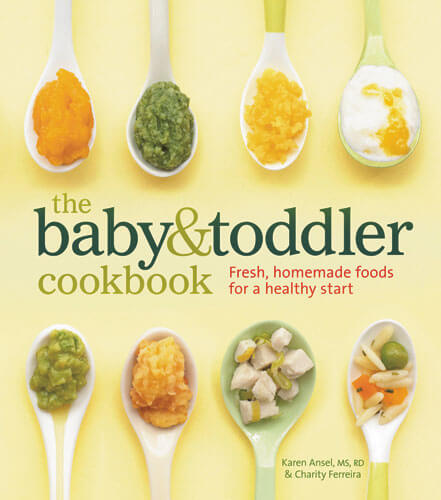After the first feeding decision a new mom makes — mother’s milk or formula? — comes another one: homemade baby food or store bought?
Nikolina Gubernat of suburban Chicago decided early on.
“My mom raised my siblings and me on homemade baby food, so I wanted to do it, too,” she says. “Also, I decided that it would be healthier for my baby since I knew exactly what I would be putting in the food.”
The benefits
“When you make homemade food for your baby, you can decide exactly what does — and doesn’t — go into it,” explains Academy of Nutrition and Dietetics spokesperson Karen Ansel, MS, RD. “In addition to better nutrition, homemade baby food also tastes better, and you can modify the texture to suit every stage of baby’s development.”
You can experiment with more interesting ingredients, helping to shape baby’s palate, so he will grow to be a more adventurous eater. Store-bought baby food is blander in taste, which will train baby to prefer only bland food.
Often overlooked are the social and emotional benefits to feeding babies the same foods you eat. When all family members eat the same meals, often, the pattern of eating together continues even when the children are older.
It’s environmentally-friendly, too. Making your own can be considered a “green” alternative, with very little packaging to throw into landfills or even to recycle.
“Making baby food from scratch does involve a little advance planning, but the benefits far outweigh the small time investment. Making food for baby in big batches, and then freezing them in single servings, can be a huge time saver,” according to Ansel, a mother of two and author of “The Baby & Toddler Cookbook.”
Money saver
“Because you’re not paying for packaging or other costs baby food companies may incur, like advertising, making baby food from scratch is far more economical,” Ansel says.
Gubernat agrees.
“It came out to be a big money saver not having to buy ready-made baby food.”
Easiest way to start?
Gubernat, whose son is 1, uses the batch-cooking method.
“I peeled any skin; chopped up the produce; boiled it until it was softened; then blended it up in a blender or food processor (with some liquid that it was boiled in); let it cool down; poured into little, two-ounce plastic containers; and froze everything,” she says.
• Start with single ingredient foods. Introduce them one at a time to see if baby has a reaction, such as an allergy or upset stomach.
“We were once told that cereals should be baby’s first food, but now we know that babies can also start with sweet fruits like apples or pears or mild vegetables like butternut squash,” explains Ansel.
• It’s easy to set aside some of the ingredients and mash or puree them for baby.
• Does baby show a fondness for a certain fruit or vegetable? Gradually combine it with other similar foods to create a new flavor favorite. For example, if he enjoys peaches, combine it with mangoes or strawberries.
• Utilize your freezer. Cook and puree fruits and vegetables and freeze portions in ice cube trays. Once they are frozen, transfer them into a quart-sized freezer bag that you label and date. When you’re ready to serve, thaw carefully in the microwave or refrigerator. Use within six weeks of freezing.
You can give your baby the best nutrition available and do it in less time than you think. All in all, Gubernat is satisfied with her decision to make her own.
“It really was very easy,” she says. “And [it] made me feel good that I did this for my son.”
Christine Palumbo is a nutritionist based in Naperville, Ill., who found it deliciously easy to create her own babies’ food at home. She can be reached at [email protected]. Follow her on Twitter @PalumboRD or on Facebook at Christine Palumbo Nutrition.
Baby’s guacamole
Avocados are high in folate and healthy fats, with a neutral flavor and creamy consistency that make them an ideal choice as one of baby’s first foods. If you use organic English (hothouse) cucumbers, which are unwaxed and have small seeds, you can skip the step of peeling and seeding them.
Makes about 3/4 cup (6 fl oz) of guacamole.
INGREDIENTS
1 large ripe avocado
1/2 cup (2½ oz) peeled and seeded cucumber
1/4 teaspoon ground cumin
DIRECTIONS: Cut the avocado in half lengthwise around the pit, and twist the halves to separate. Remove and discard the pit. Using a spoon, scoop the flesh of the avocado halves into a food processor or blender, discarding the skins. Using the large holes of a box grater-shredder, shred the cucumber, then add it to the food processor or blender along with the cumin. Process to a smooth puree, or, depending on baby’s age and chewing ability, you can leave the puree a little coarser. If necessary, add enough water, breast milk, or formula to thin the puree to a consistency your baby can handle.
STORE IT: Refrigerate in an airtight container for up to one day. (Some discoloration may occur during storage.)
Reprinted with permission from “The Baby & Toddler Cookbook” by Charity Ferreira and Karen Ansel. Copyright 2010 by Weldon Owen Inc.






















